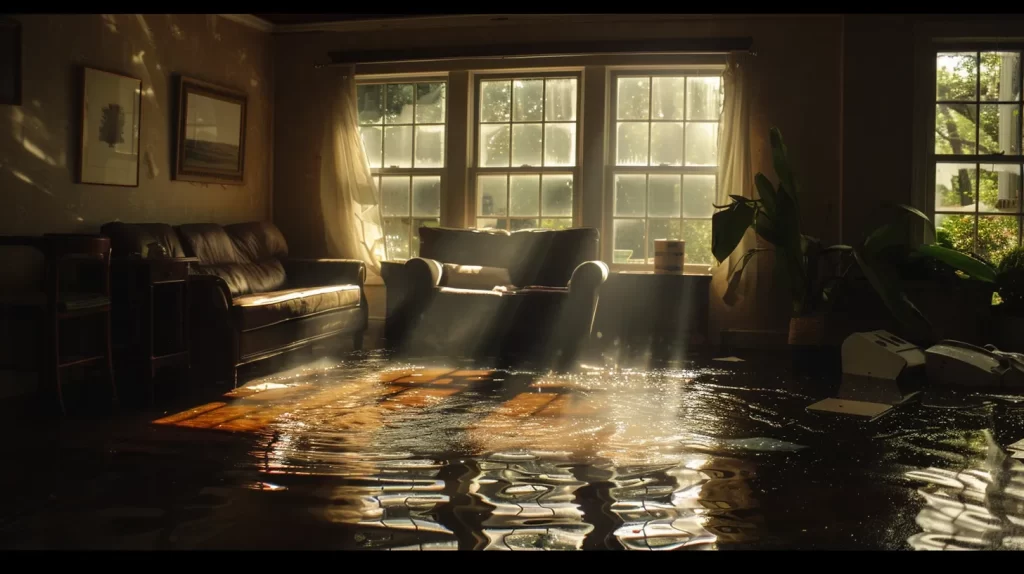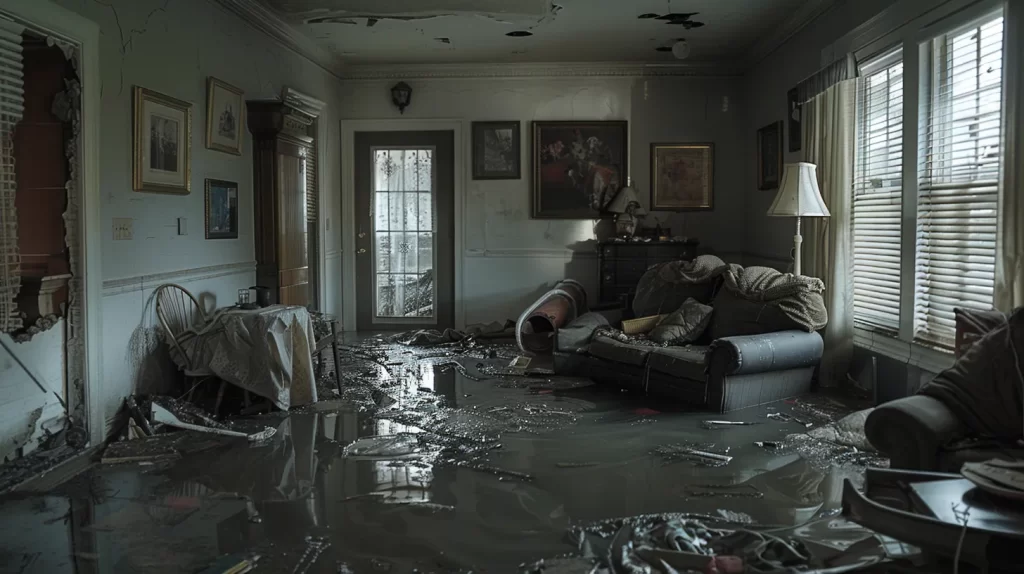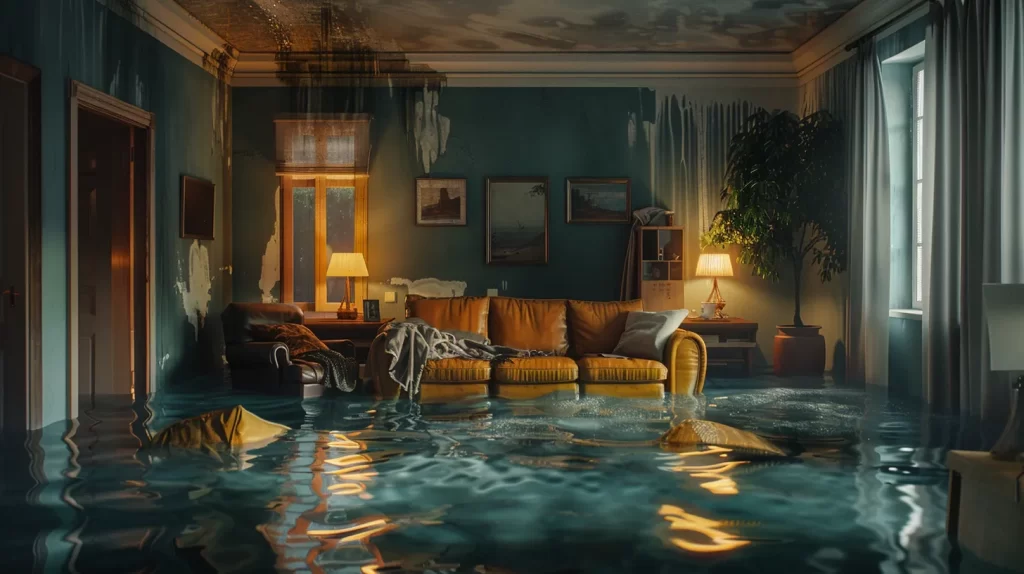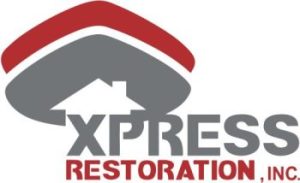Water damage can be a major concern for homeowners, especially when it comes to filing claims with insurance companies. This guide for homeowners will clarify how homeowners insurance policies address water damage and the process for filing claims. Readers will learn about the impact of water damage on insurance premiums and their responsibilities after an incident. Understanding these aspects can alleviate the stress of dealing with water damage, helping homeowners navigate the claims process more smoothly and effectively. The content will provide valuable insights, including information from the Federal Emergency Management Agency (FEMA) on available resources.
Key Takeaways
- Understanding the difference between sudden and gradual water damage is crucial for claims
- Homeowners must document damage thoroughly to support their insurance claims effectively
- Regular maintenance and preventive measures can significantly reduce the risk of water damage
- Specialty insurance products can provide coverage for scenarios excluded from standard policies
- Good communication with insurance representatives facilitates a smoother claims process and better outcomes
Understanding Home Insurance Policies for Water Damage

Understanding home insurance policies for water damage involves several critical aspects. This includes the standard coverage options for water-related damages, the distinction between sudden and gradual water damage, and the exclusions that may apply. Homeowners can refer to the guide for homeowners and fire safety resources for detailed information. It is essential to recognize the importance of policy limits and deductibles, along with the role of endorsements and riders for enhanced coverage to protect spaces like ceilings and basements from potential sump failures. Additional resources can be found on the iicrc website, the fema homepage, and the epa homepage.
Explain Standard Coverage Options for Water Damage
Standard coverage options for water damage typically found in homeowners insurance often include protection against sudden and accidental damage, such as a burst pipe or a water leak. However, essential distinctions exist regarding gradual damage and flooding, as these may not be part of a standard policy. Homeowners are encouraged to review the provisions on the IICRC website, the EPA homepage, the FEMA homepage, the pubmed database, and lung health resources, as well as the guide for homeowners, for best practices and further guidance on water strike issues, ensuring they understand how to best utilize their water leak insurance and initiate water damage claims effectively:
- Understanding coverage for sudden water damage events
- Differentiating between sudden and gradual water damage
- Reviewing exclusions pertaining to flooding
- Exploring additional endorsements for comprehensive protection
Differentiate Between Sudden and Gradual Water Damage
Sudden water damage occurs unexpectedly and is typically covered by standard insurance policies. This can include incidents like a burst pipe or an accidental overflow, while gradual water damage, such as wear and tear or slow leaks, generally is not covered. Understanding the nuances between these types of damage is vital, especially as most policies exclude incidents like sewer backup or sewage-related issues under gradual wear, which may need additional coverage for full protection. Homeowners can consult the guide for homeowners or visit the fema homepage, the epa homepage, and the iicrc website for more information.
| Type of Water Damage | Examples | Coverage Status |
|---|---|---|
| Sudden Water Damage | Burst pipe, accidental overflow | Typically covered |
| Gradual Water Damage | Wear and tear, slow leaks | Usually not covered |
| Sewer Backup Damage | Sewage overflow | Often excluded, may require additional insurance |
Discuss Exclusions That May Apply to Water Damage Claims
Exclusions in homeowners insurance policies can significantly impact water damage claims. For example, flood damage resulting from natural disasters usually requires separate flood insurance, as this is often excluded from standard homeowners policies. Homeowners can refer to the fema homepage for information on federal disaster assistance. Additionally, the epa homepage provides guidelines on environmental protection and disaster prevention. As noted by the Insurance Information Institute, homeowners should carefully review their warranty and coverage details, using a guide for homeowners to ensure they understand which incidents may not be covered, such as gradual leaks or sewer backups, to avoid surprises during the claims process. Additionally, the iicrc website offers resources on proper restoration practices.
Identify the Importance of Policy Limits and Deductibles
Policy limits and deductibles play a crucial role in managing water damage claims under standard homeowners insurance. For instance, if a homeowner files a water damaged carpet insurance claim, the policy‘s limit dictates how much the insurer will pay for repairs or replacements. Understanding these elements can prevent financial surprises when dealing with property damage, as certain incidents may exceed coverage or require out-of-pocket costs, especially if a home warranty does not cover the specific incident of water damage covered by insurance. Homeowners can refer to a guide for homeowners or visit the iicrc website for more information. Additionally, resources such as the epa homepage and lung health resources can provide further guidance.
Outline the Role of Endorsements and Riders for Enhanced Coverage
Endorsements and riders can significantly enhance home insurance policies, offering additional coverage for specific scenarios like water damage caused by a burst pipe or a malfunctioning dishwasher. Homeowners, using a guide for homeowners, questioning “should I file a home insurance claim for water damage?” may find that endorsements can cover gaps in standard policies, such as legal liability related to water damage incidents. It is wise to review these options using resources like the FEMA homepage, the EPA homepage, the IICRC website, and fire safety resources to ensure comprehensive protection, especially if there are pets in the home that could complicate claims related to water damage.
Knowing your home insurancepolicy is key, but it’s only the first step. The real test comes when you navigate the claims process after water damage strikes.
Navigating Water Damage Claims Process

The process of navigating water damage claims requires careful attention to specific steps to file a claim under a homeowners insurance policy, guide for homeowners. Essential documentation, such as photographs and receipts from the iicrc website and lung health resources, is crucial for a successful claim. Common mistakes can hinder progress, making it necessary to keep clear records and track communication with insurers via the fema homepage and epa homepage. Effective collaboration with adjusters is also vital for resolving claims efficiently.
Detail the Steps to File a Water Damage Claim
When filing a water damage claim, homeowners should begin by documenting the damage thoroughly, using resources such as the guide for homeowners and the iicrc website, which includes taking photographs and collecting receipts for repairs. This information is vital for understanding what type of water damage is covered by homeowners insurance, as not all incidents, such as leaks from the sink, may be included. If the claim involves flood-related issues, knowing the guidelines of the fema homepage and the epa homepage can provide additional clarity on securing necessary coverage.
List Essential Documentation Needed for a Successful Claim
To ensure a successful water damage insurance claim, homeowners should gather essential documentation that clearly illustrates the extent of the damage. This includes taking detailed photographs of the affected areas, retaining receipts for any repairs, and recording any correspondence with insurers. Additionally, referring to the guide for homeowners can provide valuable insights. Homeowners must also consider if their property insurance covers the type of incident in question, such as plumbing leaks, and be prepared to answer questions about whether their home warranty covers plumbing leaks, as this detail can affect the claims process significantly. For more professional standards, visiting the IICRC website or the fema homepage is recommended.
Highlight Common Mistakes to Avoid During the Claims Process
Common mistakes during the water damage claims process can create unnecessary delays and complications. For instance, failing to document the damage thoroughly, such as taking clear photographs of affected areas in the bathroom, can weaken a claim for home insurance for water damage. Additionally, homeowners often overlook the importance of leak detection systems; investing in these can help prevent extensive damage before it occurs, thus simplifying future claims related to water supply issues. Homeowners can refer to the guide for homeowners and visit the epa homepage for additional resources.
- Neglecting to document the damage with photographs
- Failing to ensure leak detection systems are in place
- Overlooking communication with the insurance provider
- Not checking if vehicle insurance might cover any related damages
Explain How to Keep Records and Track Communication With Insurers
Homeowners facing water damage claims should establish a meticulous system for keeping records and tracking communication with insurers. This involves using a dedicated folder, either physical or digital, to store all relevant documents, including copies of policies, photographs of the damage, and receipts for repairs. Keeping a detailed log of all conversations with the insurance company—such as dates, times, and the names of representatives contacted—will help ensure that the claims process flows smoothly and any disputes can be resolved efficiently, preventing potential issues related to home insurance claims. Additionally, resources such as the fema homepage and the iicrc website can provide further assistance.
| Step | Description |
|---|---|
| Document Damage | Take clear photographs and notes on the extent of the damage. |
| Store Records | Create a designated folder for insurance documentation. |
| Log Communications | Keep a record of all communications with the insurer. |
| Retain Receipts | Collect all receipts related to repairs and damages. |
Provide Tips for Working Effectively With Adjusters
To work effectively with adjusters, it is vital for homeowners to provide a guide for homeowners and clear and concise documentation of water damage claims. This includes maintaining a detailed record of communications with insurance companies and keeping all relevant photographs and receipts organized. For instance, if a basement backup leads to mildew growth, presenting well-documented evidence from the IICRC website can facilitate a smoother claims process and help ensure that coverage is maximized based on the guidelines stipulated by reliable sources like the cdc homepage and the EPA homepage.
Water damage can change everything, from the structure of your home to the numbers on your insurance bill. Understanding this connection reveals hidden costs and helps homeowners plan for the future. For additional guidance, visit the guide for homeowners or explore the epa homepage for more information.
Understanding the Impact of Water Damage on Home Insurance Premiums

Water damage claims can significantly influence future home insurance premiums. This section will analyze how such claims affect premium rates, explore factors that contribute to changes in cost after a claim, and discuss strategies for lowering premiums post-claim. Additionally, it will describe the process for shopping around for better rates using a guide for homeowners and resources from the iicrc website, and investigate how frequent claims may impact insurability, providing valuable insights for homeowners navigating water damage insurance concerns.
Analyze How Claims Affect Future Premiums
Water damage claims can lead to increased premiums on home insurance over time. When a homeowner files a claim, the insurance company may reassess the risk presented by the property, potentially leading to higher costs for coverage. This can be especially evident after significant events like storms, where claims related to flooding might be considered risky to insure. Homeowners can discuss their specific situations with an insurance agent to understand how claims impact their policies and explore options such as flood insurance, which may provide additional protections against future water damage incidents. Homeowners can refer to a guide for homeowners or visit the FEMA homepage for more information. Additionally, consulting the IICRC website can provide standards and best practices for water damage restoration:
| Type of Event | Impact on Premiums |
|---|---|
| First Water Damage Claim | Possible increase in premiums |
| Subsequent Claims | Likelihood of higher premiums |
| Flood Insurance Claim | Significant premium increase |
| Storm-Related Claims | Increased risk assessment |
Explore Factors Influencing Premium Rates Post-Claim
Several factors can influence premium rates after a water damage claim. When homeowners file a claim for issues such as water leaks or water backup coverage, insurers reassess the risk associated with insuring that property. This reevaluation can lead to increased costs for home insurance cover, especially if the claim relates to flooding, making it essential for homeowners to explore options like flood cover home insurance to mitigate rising premiums in the future. Homeowners can refer to resources such as the fema homepage or the iicrc website for guidance:
- Frequency of claims and their impact on perceived risk
- Location of the property and susceptibility to flooding
- Extent of damage and the cost of repairs
- Availability of preventive measures against future water damage
Discuss Options for Lowering Premiums After a Claim
Homeowners seeking to lower their insurance premiums after a water damage claim can take several strategic steps. First, they may consider increasing their deductible, which can reduce premium costs by shifting some financial responsibility to the homeowner during an incident. Additionally, implementing preventive measures, such as regular maintenance to reduce wear and tear on plumbing systems, can demonstrate responsible management to insurers, potentially leading to lower rates. Furthermore, reviewing the specifics of their liability insurance and ensuring adequate coverage can also help mitigate costs associated with future claims resulting from negligence. Homeowners can consult the iicrc website for guidelines on restoration standards and visit the epa homepage for additional maintenance resources.
- Consider increasing your deductible to lower premiums.
- Implement preventive measures to reduce wear and tear.
- Review liability insurance coverage for better rates.
Describe the Process for Shop Around for Better Rates
Shopping around for better rates after experiencing water damage claims is crucial for homeowners looking to minimize future expenses. It involves comparing quotes from multiple insurance providers to find a policy that offers the best coverage at the most competitive price. Homeowners should consider factors such as customer reviews, claim handling responsiveness, and whether the policy includes provisions for fire damage restoration, which can also impact premiums. Additionally, consulting the fema homepage and fire safety resources can provide valuable information on disaster preparedness and recovery:
- Identify multiple insurance companies for quotes.
- Assess coverage availability, including fire damage restoration.
- Evaluate the reputation of insurers based on customer feedback.
- Negotiate for the best possible rates and conditions.
Investigate the Implications of Frequent Claims on Insurability
Frequent claims related to water damage can significantly affect a homeowner’s insurability, as insurance providers often view multiple claims as a sign of increased risk. Over time, insurers might raise premiums or even deny coverage altogether, impacting future insurability options. Homeowners facing multiple incidents should prioritize preventive measures, such as consulting the guide for homeowners and utilizing fire safety resources from the epa homepage, to reduce the likelihood of claims and communicate openly with their insurance agents to explore coverage solutions tailored to their specific situations.
Water damage leaves its mark, not just on your home but on your finances too. Now, it’s time to look at what a homeowner must do when the damage is done and how to navigate this next chapter.
Homeowner Responsibilities After Water Damage Occurs

Homeowners facing water damage must act quickly to mitigate further issues. Immediate actions can prevent additional harm and protect property. Accurately documenting damage is vital for insurance claims, while professional assessments from the IICRC website can provide crucial insights for repairs. Additional resources are available on the FEMA homepage. Good maintenance practices from the guide for homeowners help avert future incidents, and effective communication with insurance representatives streamlines the claims process. These key steps support a smoother resolution for water damage claims.
Recommend Immediate Actions to Mitigate Further Damage
Homeowners facing water damage must act swiftly to limit further harm. Following a guide for homeowners, the first step involves shutting off the main water supply to prevent additional leaks and turning off electricity if necessary to avoid electric shock hazards. Engaging a professional restoration service from the iicrc website can help mitigate risks by assessing the damage and initiating proper cleanup using guidelines from the epa homepage to safeguard the home effectively:
- Shut off the main water supply.
- Turn off electricity in affected areas.
- Contact a professional restoration service.
- Document the damage with photographs for insurance purposes.
Suggest Methods to Document the Damage Accurately
To document water damage accurately, homeowners should take detailed photographs of affected areas immediately after discovery. Clear images from different angles help illustrate the extent of the damage, while written descriptions note the specific circumstances surrounding the incident. Additionally, keeping receipts for any initial repairs or restoration services enhances the documentation process, ensuring a comprehensive claim submission. For further guidance, refer to the iicrc website and the fema homepage:
- Take multiple photographs of damaged areas.
- Write descriptions of the damage and the incident.
- Retain receipts for repairs and services.
Describe the Importance of Professional Assessments
Professional assessments are crucial after water damage occurs, as they provide an expert evaluation of the extent and type of damage sustained. These assessments not only help homeowners understand the necessary repairs and restoration services required but also serve as a guide for homeowners and play a significant role in insurance claims. Restoration specialists, equipped with knowledge and experience, can identify hidden issues that may not be immediately apparent, ensuring that all damage is properly documented and addressed, ultimately supporting a more successful claims process. For additional information, homeowners can visit the fema homepage or the iicrc website.
Advise on Maintenance Practices to Prevent Future Issues
To effectively prevent future water damage issues, homeowners should prioritize regular maintenance practices around their property. Conducting routine inspections of plumbing systems, checking for leaks, and ensuring proper drainage can significantly reduce the risk of water-related incidents. Additionally, maintaining gutters and downspouts, along with installing water detection devices, can provide early warnings of potential problems. Homeowners can refer to the guide for homeowners or visit the iicrc website for more information, thus protecting both the home and any associated insurance claims.
Discuss How to Communicate Effectively With Insurance Representatives
Effectively communicating with insurance representatives is essential for homeowners navigating water damage claims. To ensure clarity, homeowners should present all relevant information in an organized manner, including detailed accounts of the damage and the steps taken immediately after the incident. Homeowners can refer to the guide for homeowners and the iicrc website for additional support. By maintaining a respectful and open dialogue, along with promptly addressing any questions or concerns, homeowners can foster a cooperative relationship that may facilitate a smoother claims process and lead to a satisfactory resolution.
Water damage can pull a homeowner into a complex world of claims and insurance. Understanding real cases can shed light on what to expect and how to navigate the path ahead.
Case Studies of Water Damage Claims

This section reviews real-life examples of successful water damage claims, highlighting common challenges homeowners face during the process. It shares valuable lessons learned from denied claims that can help improve future outcomes. Best practices adopted by homeowners throughout the claims process, outlined in the guide for homeowners, will be examined, along with the significant role legal assistance plays in resolving complicated claims. Additional resources can be found on the fema homepage.
Review Real-Life Examples of Successful Water Damage Claims
Reviewing real-life examples of successful water damage claims highlights the importance of thorough documentation and prompt communication with insurance providers. For instance, a homeowner who experienced a sudden pipe burst was able to secure coverage for extensive repairs by documenting the damage with clear photographs and promptly filing the claim with detailed information. The guide for homeowners and resources like the iicrc website provide valuable support throughout this process. Such cases illustrate how effective management of water damage claims can lead to successful outcomes, offering valuable lessons for others facing similar challenges.
Present Common Challenges Faced in Water Damage Claims
Homeowners often encounter several challenges when filing water damage claims. One significant issue is the complexity of coverage, where many policies may not adequately address specific types of damage, like gradual leaks or sewer backups. Additionally, homeowners frequently struggle with documentation requirements; insufficient evidence can lead to denied claims or reduced payouts, emphasizing the need for thorough record-keeping during water damage incidents. Utilizing resources such as the iicrc website and the guide for homeowners can help navigate these challenges.
Share Lessons Learned From Denied Claims to Improve Outcomes
Homeowners can gain valuable insights from denied water damage claims that can significantly improve future outcomes. For instance, understanding the importance of thorough documentation is crucial; claims often fail due to insufficient evidence of damage or lack of detail in service reports. By prioritizing clear photographs, comprehensive records, and prompt communication with insurance representatives, homeowners can better navigate the complexities of home insurance and enhance their chances of a successful claim resolution. Additionally, referring to the guide for homeowners and the iicrc website can provide valuable support in this process.
Highlight Best Practices Used by Homeowners During the Claims Process
Homeowners who effectively navigate the water damage claims process often follow established best practices. These include meticulously documenting damage with photographs and detailed notes, along with maintaining clear communication with their insurance providers. Additionally, consulting resources such as the FEMA homepage and the IICRC website can provide valuable guidance. By proactively addressing documentation needs and promptly filing claims, homeowners increase their chances of a successful resolution, leading to more favorable outcomes in their water damage insurance claims:
| Best Practice | Description |
|---|---|
| Thorough Documentation | Capture detailed photographs and notes about the damage. |
| Clear Communication | Maintain regular contact with insurance providers to share updates. |
| Prompt Claims Filing | File claims as soon as possible to avoid delays. |
Illustrate the Role of Legal Assistance in Complicated Claims
In complicated water damage claims, legal assistance can play a critical role in navigating the complexities of homeowners insurance policies. Homeowners facing disputes with their insurance carriers often benefit from the expertise of attorneys who specialize in property damage claims. These professionals can guide clients through the claims process using a guide for homeowners, help them understand their rights, and advocate for fair compensation when issues arise. Additionally, resources such as the fema homepage and the iicrc website provide valuable information for those affected.
- Legal experts assist in deciphering policy language and coverage limits.
- They represent homeowners in negotiations with insurance companies.
- Attorneys provide insights on filing appeals in case of denied claims.
- They help gather necessary documentation and evidence to support claims.
Water damage incidents rise, prompting insurers to rethink their strategies. The next chapter unveils how these changes will shape the future of home insurance.
Future Trends in Home Insurance Relating to Water Damage

Advancements in technology are enhancing the monitoring of water damage, with resources such as the iicrc website, while specialty insurance products are on the rise to address specific needs. Environmental factors referencing the epa homepage are prompting policy changes, leading to shifts towards more comprehensive coverage options. Consumer behavior is likely to influence future insurance offerings, guiding insurers in developing policies that better meet homeowner requirements, as outlined in the guide for homeowners, regarding water damage issues.
Examine Advancements in Technology for Monitoring Water Damage
Advancements in technology are significantly transforming how homeowners monitor and manage water damage. Smart home devices, such as leak detection systems and moisture sensors, are being increasingly utilized to provide real-time alerts, helping homeowners catch issues before they escalate into costly claims. These technologies not only enhance preventative measures with resources like the guide for homeowners and epa homepage but also support a smoother claims process with documented evidence from the iicrc website, ultimately benefiting both property owners and insurance providers.
Discuss the Rise of Specialty Insurance Products for Water Damage
As homeowners become increasingly aware of the risks associated with water damage, many insurance providers are offering specialty insurance products specifically designed to address these concerns. These specialized policies often cover scenarios that standard home insurance may exclude, such as damage from sewer backups or specific flooding conditions. By providing tailored coverage options, insurers enable property owners to better protect their homes against potential water-related threats, enhancing peace of mind during periods of heavy rainfall or when living near water sources. Homeowners can consult a guide for homeowners, the fema homepage, and the iicrc website for additional information:
| Specialty Insurance Coverage | Description |
|---|---|
| Sewer Backup Insurance | Covers damages caused by sewer line backups, which are often excluded in standard policies. |
| Flood Insurance | Provides protection against flooding from natural disasters, requiring a separate policy. |
| Water Damage Endorsements | Adds coverage for specific water damage scenarios, enhancing standard policy limits. |
Analyze Environmental Factors Influencing Policy Changes
Environmental factors such as climate change and increasing extreme weather events significantly influence home insurancepolicy changes regarding water damage. Insurers are adapting to these emerging risks by reevaluating coverage options, often resulting in more comprehensive policies to address flooding and related risks. As flooding incidents rise due to heavier rainfall and changing weather patterns, homeowners need to be aware that insurance providers may adjust their offerings to better protect against potential water damage, highlighting the importance of staying informed about policy updates and coverage needs. Consulting resources like the fema homepage and a guide for homeowners can help in understanding these changes.
Identify Industry Shifts Towards More Comprehensive Coverage Options
Insurance companies are increasingly recognizing the need for comprehensive coverage options to protect homeowners from water damage. These shifts often involve policies that cater specifically to scenarios previously excluded from standard home insurance, such as sewer backups and extensive flooding. By offering tailored coverage plans, insurers provide homeowners with enhanced peace of mind, ensuring they are better equipped to handle potential water-related incidents. Homeowners can refer to the guide for homeowners and visit the epa homepage for more information on environmental safety.
Predict How Consumer Behavior May Shape Future Policy Offerings
Consumer behavior is evolving, and this shift will likely influence future policy offerings in the realm of home insurance and water damage coverage. As homeowners become more aware of their risks, using resources such as a guide for homeowners and the epa homepage, and the implications of water damage, they may demand more specialized policies that address specific needs, such as coverage for sewer backups or enhanced protection against floods, which are often discussed on the fema homepage. Insurers that adapt to these changing preferences will not only retain existing customers but also attract new ones by offering innovative solutions that align with current homeowner concerns.
| Consumer Behavior Trends | Impact on Policy Offerings |
|---|---|
| Increased Awareness of Water Risks | Greater demand for tailored water damage policies |
| Desire for Comprehensive Coverage | More options for sewer backup and flood protection |
| Preference for Advanced Technology | Integration of monitoring devices in policies |
Conclusion
Understanding the nuances of home insurance in relation to water damage claims is vital for every homeowner. Clearly differentiating between sudden and gradual water damage helps in maximizing coverage and minimizing out-of-pocket expenses. Proper documentation and proactive communication with insurers can significantly enhance the likelihood of successful claims. By being informed and prepared, homeowners can better protect their properties and financial well-being against water-related incidents.
Water Damage Repair &
Restoration in San Diego
We get to work quickly when we receive a call for water damage cleanup in your home or business. Our team of experts will evaluate your situation to provide creative and effective solutions to restore your property using the latest, most effective technologies and processes. Xpress Restoration serves San Diego and surrounding areas with industry-leading water damage restoration and water damage cleaning services..
With staff on call 24/7 ready to help, Xpress Restoration has a wide range of capabilities for water extraction, water damage drying services, and water damage restoration. We will get your home or property back to normal as quickly as possible.
Call us Today at 619-607-3857.


